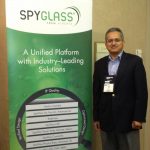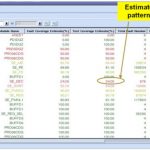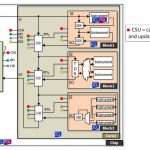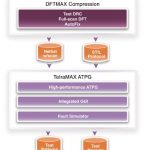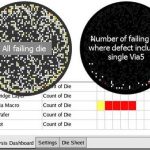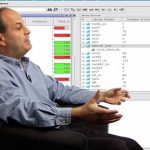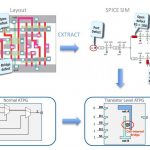I am talking about the health of electronic and semiconductor design, which if made sound at RTL stage, can set it right for the rest of the design cycle for faster closure and also at lesser cost. Last week was the week of ITC(International Test Conference) for the Semiconductor and EDA community. I was looking forward to what ITC… Read More
Tag: atpg
A Hybrid Test Approach – Combining ATPG and BIST
In the world of IC testability we tend to look at various approaches as independent means to an end, namely high test coverage with the minimum amount of test time, minimum area impact, minimum timing impact, and acceptable power use. Automatic Test Pattern Generation (ATPG) is a software-based approach that can be applied to any… Read More
SpyGlass: Focusing on Test
For decades we have used a model of faults in chips that assumes that a given signal is stuck-at-0 or stuck-at-1. And when I say decades, I mean it. The D-algorithm was invented at IBM in 1966, the year after Gordon Moore made a now very famous observation about the number of transistors on an integrated circuit. We know that stuck-at… Read More
Scan the horizon, P1687 takes us higher
The tech standards cycle almost always goes like this: Problems or limits develop with the existing way of doing things. Innovators attempt to engineer solutions, usually many of them. Chaos ensues when customers figure out nothing new works with anything else. Competitors sit down and agree on a specification where things work… Read More
Minimize the Cost of Testing ARM® Processor-based Designs and Other Multicore SoCs
On my first job out of college as an IC design engineer I was surprised to discover that a major cost of chips was in the amount of time spent on the tester before being shipped. That is still true today, so how would you keep your tester time down, test coverage high and with a minimum number of pins when using multiple processors on a single… Read More
Testing an IC Sandwich
At a lovely, but chilly, 3DIncites awards breakfast during SEMICON West, I saw Mentor Graphics win in two of five categories (Calibre 3DSTACK was the other winner). Afterwards, I talked to Steve Pateras, the product marketing director of Mentor’s test solutions about Tessent Memory BIST, which was one of the winners. I asked Pateras… Read More
A Goldmine of Tester Data
Yesterday at SEMICON West I attended an interesting talk about how to use the masses of die test data to improve silicon yield. The speaker was Dr. Martin Keim, from Mentor Graphics.
First of all, he pointed out that with advanced process nodes (45nm, 32nm, and 28nm), and new technologies like FinFETs, we get design-sensitive defects.… Read More
Free Pass to SEMICON West!
SEMICON West is next week, July 9-11 in San Francisco. If you haven’t signed up, and want to attend for free instead of $100,
1) Send an email to silicon_test@mentor.com with subject line “Semicon pass.”
2) Register for SEMICON West
3) After registering, download the SEMICON West mobile app and start building your schedule. Here… Read More
10 years, 100,000 miles, or <1 DPM
Auto makers have historically been accused of things like planned obsolescence – redesigning parts to make repairs painfully or even prohibitively expensive – and the “warranty time-bomb”, where major systems seem to fail about a week after the warranty expires. Optimists would chalk both those up to relentless innovation,… Read More
Cell-Aware Test Seminar
You may have heard about cell-aware testing. It’s a transistor-level test (ATPG) methodology that is quickly becoming a hot topic. If you are involved in DFT and are looking for better quality and reliability, you should definitely know about cell-aware testing.
And lucky you, on May 16, 2013, you can attend a free seminar on cell-aware… Read More


